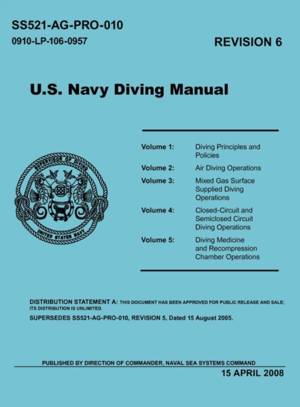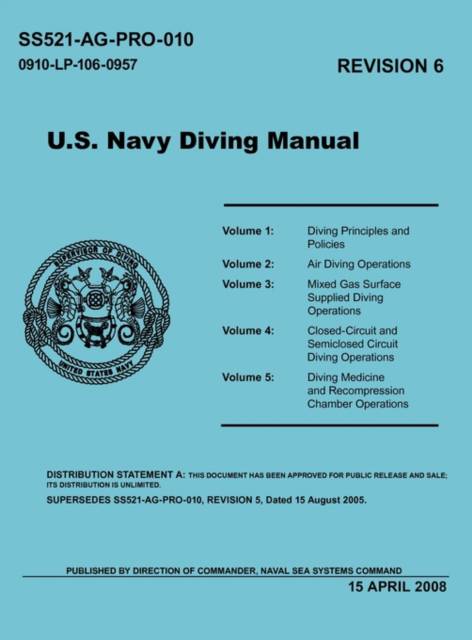
- Afhalen na 1 uur in een winkel met voorraad
- Gratis thuislevering in België vanaf € 30
- Ruim aanbod met 7 miljoen producten
- Afhalen na 1 uur in een winkel met voorraad
- Gratis thuislevering in België vanaf € 30
- Ruim aanbod met 7 miljoen producten
Zoeken
U.S. Navy Diving Manual (Revision 6, April 2008)
Naval Sea Systems Command, U S Department of the Navy
Hardcover | Engels
€ 277,45
+ 554 punten
Omschrijving
"Since the 1950s, the U.S. Navy Diving Manual has served as the internationally recognized standard for allowable exposure while breathing compressed air at varying depths. For many years, the 1956/1957 Diving Manual "air tables" also provided the prescribed decompression schedules for dive profiles that exceeded allowable exposure limits. Due to concern over unacceptable rates of decompression sickness and key research on hyperbaric medicine that has developed mathematical models for gas exchange in human tissues, the U.S. Navy has now totally revised the Manual's air tables to make use of this valuable new research. These changes, together with those to the Manual's other sections, represent the most comprehensive updating of Navy diving procedures since 1956. Among the key sections affected by this thoroughgoing revision are: Air decompression definitions; Emergency procedures; Repetitive dives; Variations in rate of ascent; Surface-supplied mixed gas diving procedures; Diagnosis and treatment of decompression sickness and arterial gas embolism; Recompression chamber operation. In addition to these key updates, the Manual provides extensive information on medical treatment for dive injuries; dangerous, predatory, and venomous marine animals; and many other topics of interest. It also includes numerous authoritative charts and tables covering all aspects of the diving experience. Revision 6 of the U.S. Navy Diving Manual represents the culmination of extensive research and empirical validation of its core - the crucial air tables that can mean the difference between life and death. These tables, as well as the detailed and carefully researched text, make this latest edition of the Manual an indispensable reference and instructional source for military and civilian divers alike."
Specificaties
Betrokkenen
- Auteur(s):
- Uitgeverij:
Inhoud
- Aantal bladzijden:
- 994
- Taal:
- Engels
Eigenschappen
- Productcode (EAN):
- 9781907521201
- Verschijningsdatum:
- 1/10/2010
- Uitvoering:
- Hardcover
- Formaat:
- Genaaid
- Afmetingen:
- 216 mm x 279 mm
- Gewicht:
- 2553 g

Alleen bij Standaard Boekhandel
+ 554 punten op je klantenkaart van Standaard Boekhandel
Beoordelingen
We publiceren alleen reviews die voldoen aan de voorwaarden voor reviews. Bekijk onze voorwaarden voor reviews.











